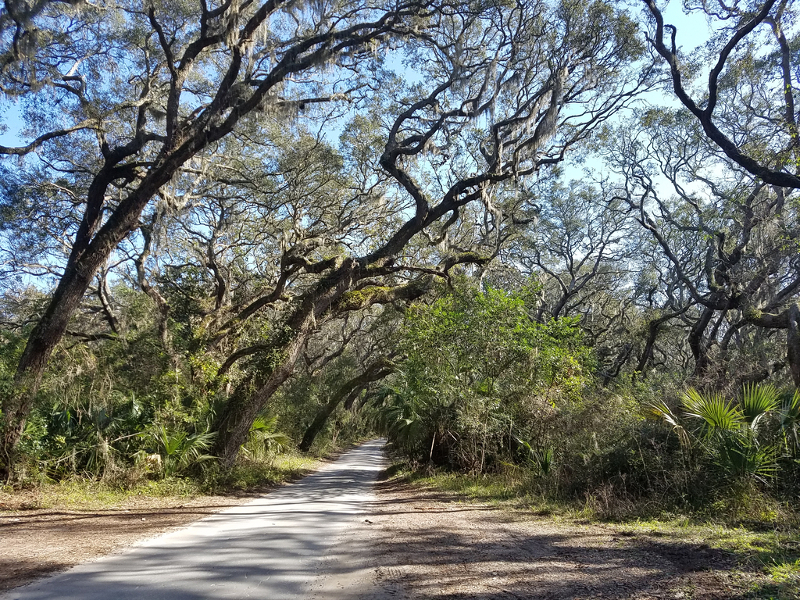
Wild Places of Fort George Island

From the tiniest insects to the stately mammals, the marshes and maritime hammock forest of Fort George Island Cultural State Park provide a sanctuary for wildlife on this rustic barrier island. Dominated by graceful live oak hardwood trees and towering loblolly pines, the lush Florida jungle of palmettos, hollies and bays provides food and shelter in the forest community.
Insects flourish on Fort George Island. With a desire to maintain the native fauna, no pesticides are used here, providing an impressive nighttime lighting symphony each spring as thousands of bioluminescent lightning bugs perform their nocturnal overtures. During an evening stroll or paddle, flashes of light may surround you as they seek their lady love bugs in the dark. In the daylight, dazzling blue and green dragonflies skirt the salt marsh waters hunting mosquitoes and flies. Striking black and yellow argiope spiders build their tree-top webs to ensnare smaller bugs. The song of crickets and cicadas rings the island as the sun sets.

Marine life is abundant in the salt marsh waters of the Fort George River. Young fish of all kinds flourish in the estuarine nursery. Fiddler crabs wave their impressive claws at one another as they munch on mud along the shoreline. Silver mullet leap out of the water to clear algae and bubbles from their gills. Tailing redfish and wide-winged stingrays stalk the tidal grasses for mud minnows and feisty blue crabs. Diamondback terrapin turtles patrol for shrimp and a mate, while wading birds like snowy egrets and great blue herons hunt the shallows and osprey dive from overhead in pursuit of a fish meal.

In the forest, red-headed pileated woodpeckers, American bald eagles and great horned owls fly from tree to tree. Below, green anoles and tree frogs scale the trunks hunting for bugs and ants. Gopher tortoises amble through the grasses nibbling on tasty gopher apple and wildflowers on their way to and from their long, deep, climate-controlled burrows. Alongside the tortoise, armadillos and opossums rustle for grubs. Venomous yet shy snakes slither across the ground, including the diamondback rattlesnake, pygmy rattler and cottonmouth, while the nontoxic black racer, coach whip and yellow rat snakes also hunt for small mammals, reptiles and birds.

Across the island, white-tailed deer, raccoons, bobcats, coyotes and alligators travel preferred routes and established game trails. The deer may venture down to the marsh to graze on juicy marsh pickles, in search of salty nutrients. In the spring does move their spotted fawns from hiding spots as they forage on trees and plants across the island. Raccoons too enjoy the fruits of the marsh and the forest, using their dexterous paws to search for clams, fish, snails and oysters in the mud and bulking up on berries.
Bobcats prowl for marsh rabbits, squirrels and lizards from perches in the tree limbs, ambushing unsuspecting prey below. Coyotes, a recent arrival to these islands, compete for birds, eggs, young tortoises, rodents and whatever else these voracious omnivores can grab. Alligators move between the few fresh water ponds, staking territory and staying warm. They may swim through the marsh rivers to travel between islands but can’t stay too long in salt water.

From lightning bugs to alligators and all types in between, this island is a living landscape. Look for evidence of these shy and stealthy critters when you visit. This can be found in the tracks, webs, dung, scrapes, burrows, trails, fur, calls and smells that reveal themselves as you walk.
Pick up a guidebook or Junior Ranger backpack at a ranger station for more tools like a magnifying glass, binoculars and track IDs to help you learn and observe as you explore Fort George Island Cultural State Park.